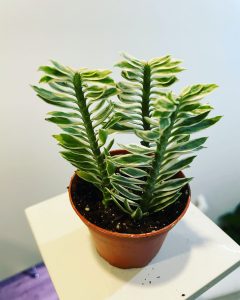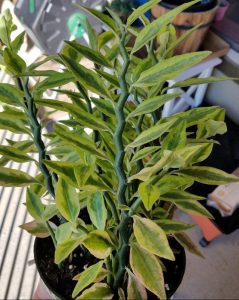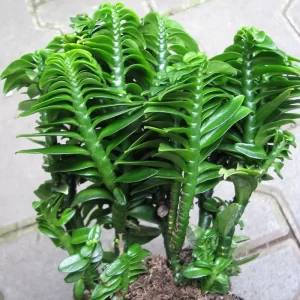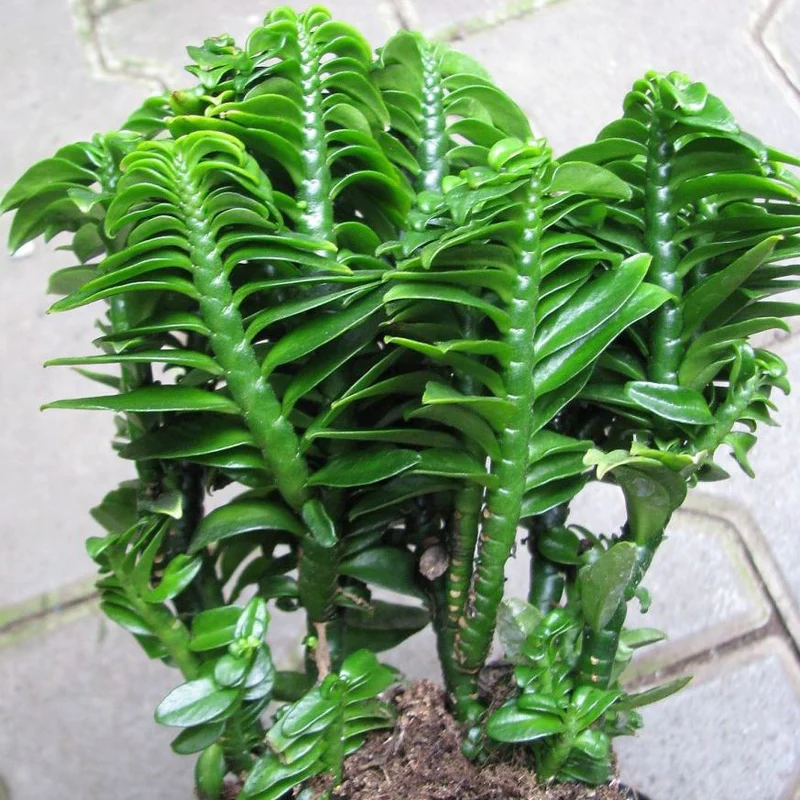Devil's Backbone plant (Euphorbia tithymaloides) is a succulent that is also commonly known as "Jacob's Ladder" or "Redbird Cactus." Its unique appearance makes it a popular choice among houseplant enthusiasts, and its easy-to-care-for nature makes it a great choice for beginners. In this article, we will provide you with tips on how to care for this unique plant.

1. Overview of Devil's Backbone Plant
Devil's Backbone plant is native to the West Indies and is characterized by its thick, succulent stems that resemble a zig-zag pattern. It can grow up to three feet tall and has small, green leaves that are oval-shaped and grow in clusters. The plant's unique appearance is due to the way the stems grow, which creates an interesting texture that makes it a popular choice for indoor gardens.
2. Lighting
Devil's Backbone plant prefers bright, indirect light. It is essential to keep the plant away from direct sunlight, as it can burn the leaves. If you notice that the leaves are turning yellow or brown, it may be an indication that the plant is getting too much light. In contrast, if the plant is not getting enough light, it may begin to lose its color.
3. Watering
The Devil's Backbone plant is a succulent, which means that it stores water in its leaves and stems. As a result, it requires less water than other houseplants. It is essential to allow the soil to dry out between watering sessions to prevent overwatering, which can cause root rot. In the winter, it is recommended to water the plant even less frequently than in the summer.

4. Temperature and Humidity
Devil's Backbone plant prefers temperatures between 60 and 80 degrees Fahrenheit. It can tolerate slightly cooler temperatures, but it is essential to keep it away from drafts or air conditioning vents, which can cause the leaves to dry out. The plant is not particularly picky about humidity levels and can thrive in both dry and humid environments.
5. Soil and Fertilizer
Devil's Backbone plant prefers well-draining soil, as it is susceptible to root rot. A mixture of potting soil, perlite, and sand can create an ideal growing medium for this plant. Fertilize the plant once a month with a balanced, water-soluble fertilizer during the growing season (spring and summer).
6. Pruning
Pruning Devil's Backbone plant is not necessary, but it can help promote bushier growth. Use clean, sharp scissors to remove any dead or damaged leaves or stems. If you want to encourage the plant to branch out, you can also pinch off the top of the stem, which will force it to grow new stems from the base.

7. Propagation
Devil's Backbone plant can be easily propagated from stem cuttings. Cut a stem that is at least three inches long and place it in a pot filled with well-draining soil. Water the plant sparingly until new growth appears, which indicates that the cutting has rooted.
8. Common Problems
Devil's Backbone plant is a relatively hardy plant, but it can still experience problems. Overwatering can cause root rot, which can be fatal to the plant. If you notice that the plant is losing its color or dropping leaves, it may be an indication of too much or too little water. Pests such as mealybugs and spider mites can also be a problem, but they can be easily treated with an insecticidal soap.
9. Benefits of Devil's Backbone Plant
In addition to its unique appearance, Devil's Backbone plant has several benefits. The plant has been used in traditional medicine to treat a variety of ailments, including diarrhea, respiratory problems, and skin irritations. The milky sap of the plant contains compounds that have anti-inflammatory and analgesic properties.
Furthermore, Devil's Backbone plant can help purify the air in your home. Like other succulents, it absorbs carbon dioxide during the day and releases oxygen at night, making it an ideal plant for bedrooms or other areas where you spend a lot of time.
10. Conclusion
Devil's Backbone plant is a unique and easy-to-care-for houseplant that is perfect for beginners and experienced gardeners alike. By providing it with the right amount of light, water, and fertilizer, you can enjoy its distinctive appearance for years to come. Additionally, the plant's medicinal properties and air-purifying abilities make it an excellent addition to any home.

FAQs
- Is Devil's Backbone plant toxic to pets?
Yes, Devil's Backbone plant is toxic to pets. The milky sap of the plant can cause skin irritation, and if ingested, it can cause vomiting, diarrhea, and other symptoms.
- Can Devil's Backbone plant grow in low light conditions?
Devil's Backbone plant prefers bright, indirect light, but it can tolerate low light conditions for short periods.
- How often should I water Devil's Backbone plant?
Devil's Backbone plant is a succulent and does not require frequent watering. Allow the soil to dry out between watering sessions, and water the plant even less frequently in the winter.
- How can I propagate Devil's Backbone plant?
Devil's Backbone plant can be easily propagated from stem cuttings. Cut a stem that is at least three inches long and place it in a pot filled with well-draining soil.
- Can I use Devil's Backbone plant for medicinal purposes?
Devil's Backbone plant has been used in traditional medicine to treat a variety of ailments, but it is essential to consult with a healthcare professional before using it for medicinal purposes.
